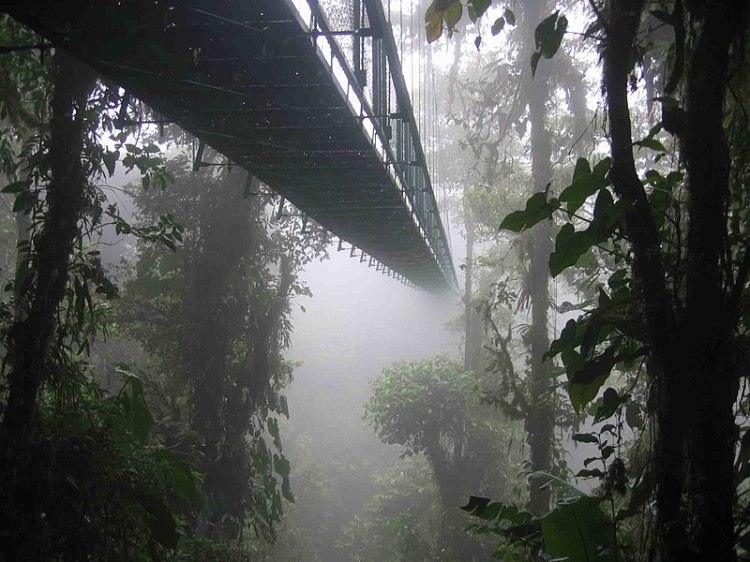A cloud forest, also called a water forest, is a generally tropical or subtropical, evergreen, montane, moist forest characterized by a persistent, frequent or seasonal low-level cloud cover, usually at the canopy level, formally described in the International Cloud Atlas as silvagenitus.
Distribution and Climate
Dependent on local climate, which is affected by the distance to the sea, the exposition and the latitude (from 23°N to 25°S), the altitude varies from 500 m to 4000 m above sea level. Typically, there is a relatively small band of altitude in which the atmospheric environment is suitable for cloud forest development. This is characterized by persistent fog at the vegetation level, resulting in the reduction of direct sunlight and thus of evapotranspiration. With in cloud forests, much of the moisture available to plants arrives in the form of fog drip, where fog condenses on tree leaves and then drips onto the ground below.
While cloud forest today is the most widely used term, in some regions, these ecosystems or special types of cloud forests are called mossy forest, elfin forest montane thicket, and dwarf cloud forest.

Characteristics
In comparison with lower tropical moist forests, cloud forests show a reduced tree stature combined with increased stem density and generally the lower diversity of woody plants.Trees in these regions are generally shorter and more heavily stemmed than in lower-altitude forests in the same regions, often with gnarled trunks and branches, forming dense, compact crowns. Their leaves become smaller, thicker and harder with increasing altitude.The high moisture promotes the development of a high biomass and biodiversity of epiphyte, particularly bryophytes, lichens, ferns, bromeliads and orchids. The number of endemic plants can be very high.

Temperate cloud forests
Although far from being universally accepted as true cloud forests, several forests in temperate regions have strong similarities with tropical cloud forests. The term is further confused by occasional reference to cloud forests in tropical countries as “temperate” due to the cooler climate associated with these misty forests.
Cloud Forest in Honduras
Over 100 Tropical Montane Cloud Forest “islands” are found on isolated mountaintops across the Chortis Highlands section of Mesoamerica (brown dots on map at right), and range from as low as 1000 meters to almost 3000 meters above sea level. Habitats include “classic” epiphyte-laden, old-growth forest and areas of second-growth as well as mossy woods, elfin forests, and high-altitude fir and spruce forests. While 75% of TMCFs in Honduras receive some degree of protection, less than 20% are adequately known in biological terms. There is an extremely high degree of endemism in cloud forests, peaking in the bosques nublados of Honduras, which are the richest in this respect anywhere in Mesoamerica.
CELAQUE:
Is an example of cloud forest.
